Spring OAuth 简单实践
引言
最近在了解OAuth2.0,一直想搞一个自己的类似于SakuraFrp使用的OpenID授权站,就想自己写一个。找的很多国内教程用的包都是 spring-cloud 下的关于 oauth 的包,或是直接使用老版本的 security-oauth 包,由于 spring-security 最新版是 6.x ,教程的版本太老,且想使用 start.spring.io 中提供的 spring-boot-starter-oauth2-xxx 使用配置文件快速开发,写下本文记录。
环境:Jdk17, Spring 3.1.4
实现
简单使用
使用 Client Credentials Grant 客户端模式对 Authorization-Server 进行简单使用
项目创建
-
新建一个空项目
oauth-demo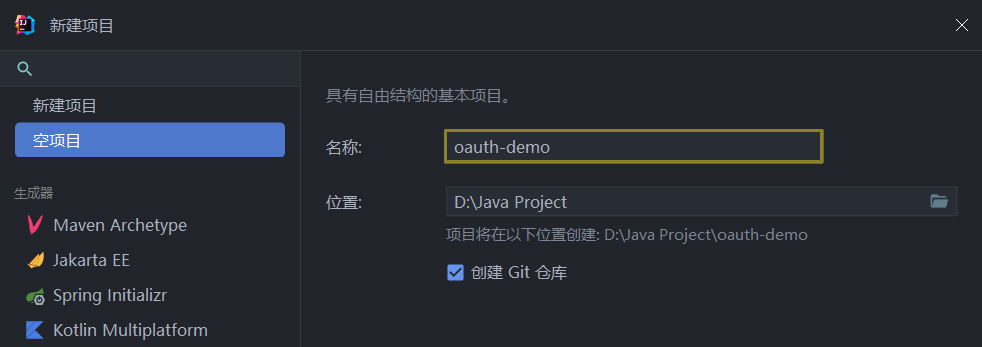
-
新建一个
authorization-server模块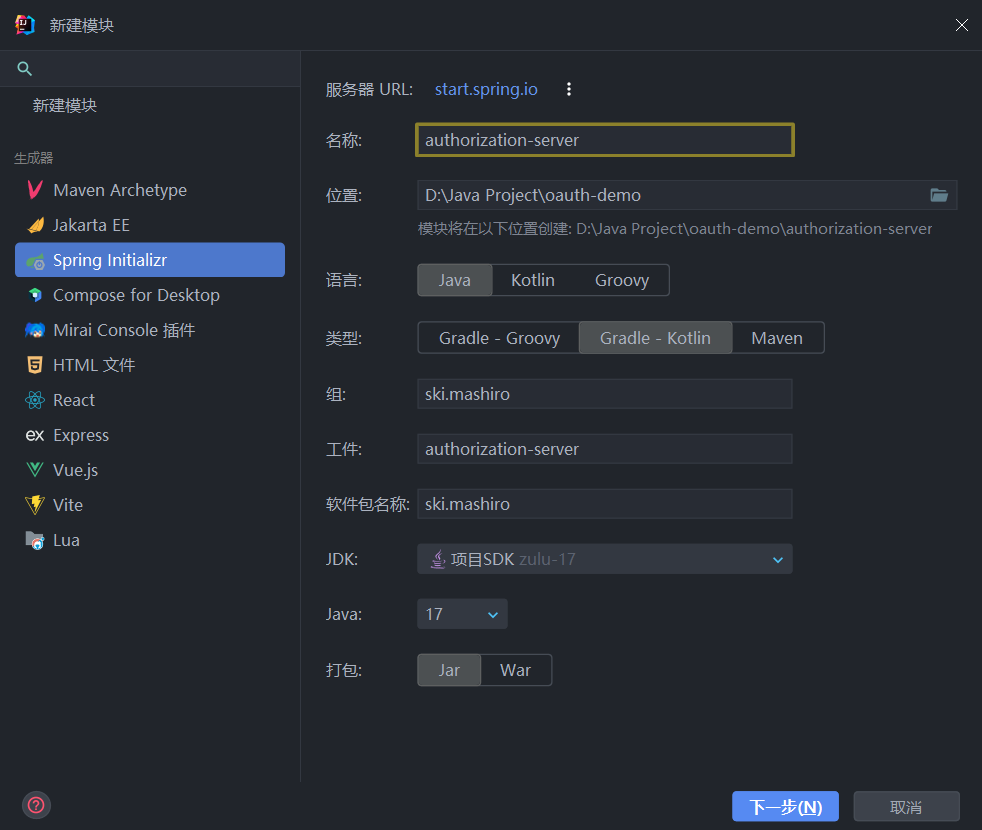
添加如下依赖:
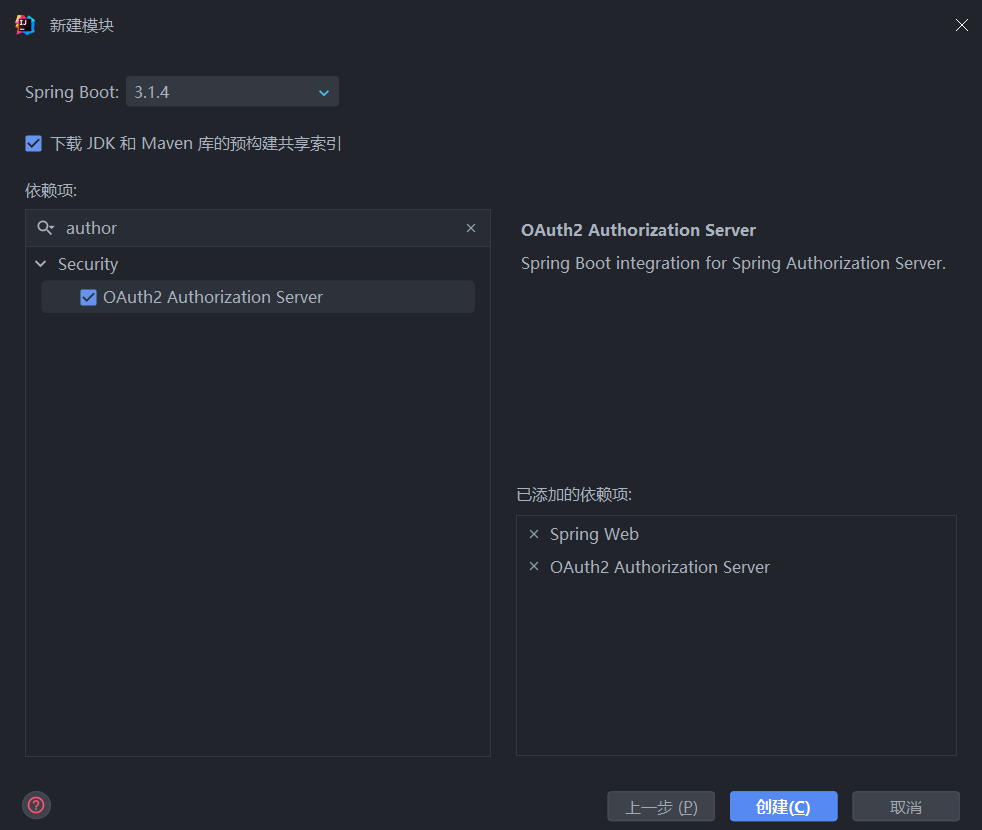
implementation("org.springframework.boot:spring-boot-starter-oauth2-authorization-server") implementation("org.springframework.boot:spring-boot-starter-web") -
修改配置文件
server: port: 8080 spring: application: name: authorization-server security: oauth2: authorization-server: client: demo-0: registration: client-id: demo-0 # {noop} 不加密,明文 client-secret: "{noop}passwd" client-name: demo-0 client-authentication-methods: - client_secret_basic # 客户端授权模式 authorization-grant-types: # 客户端模式 - client_credentials logging: level: org.springframework.security: trace启动项目
测试
使用
Insomnia或Postman进行测试向
http://127.0.0.1:8080/oauth2/token发送POST请求-
Basic Auth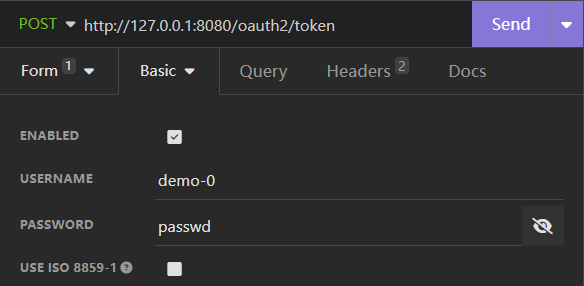
-
设置请求体
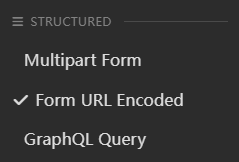
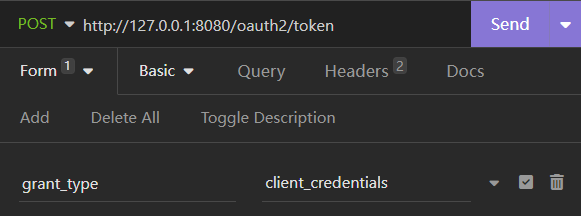
-
发送请求
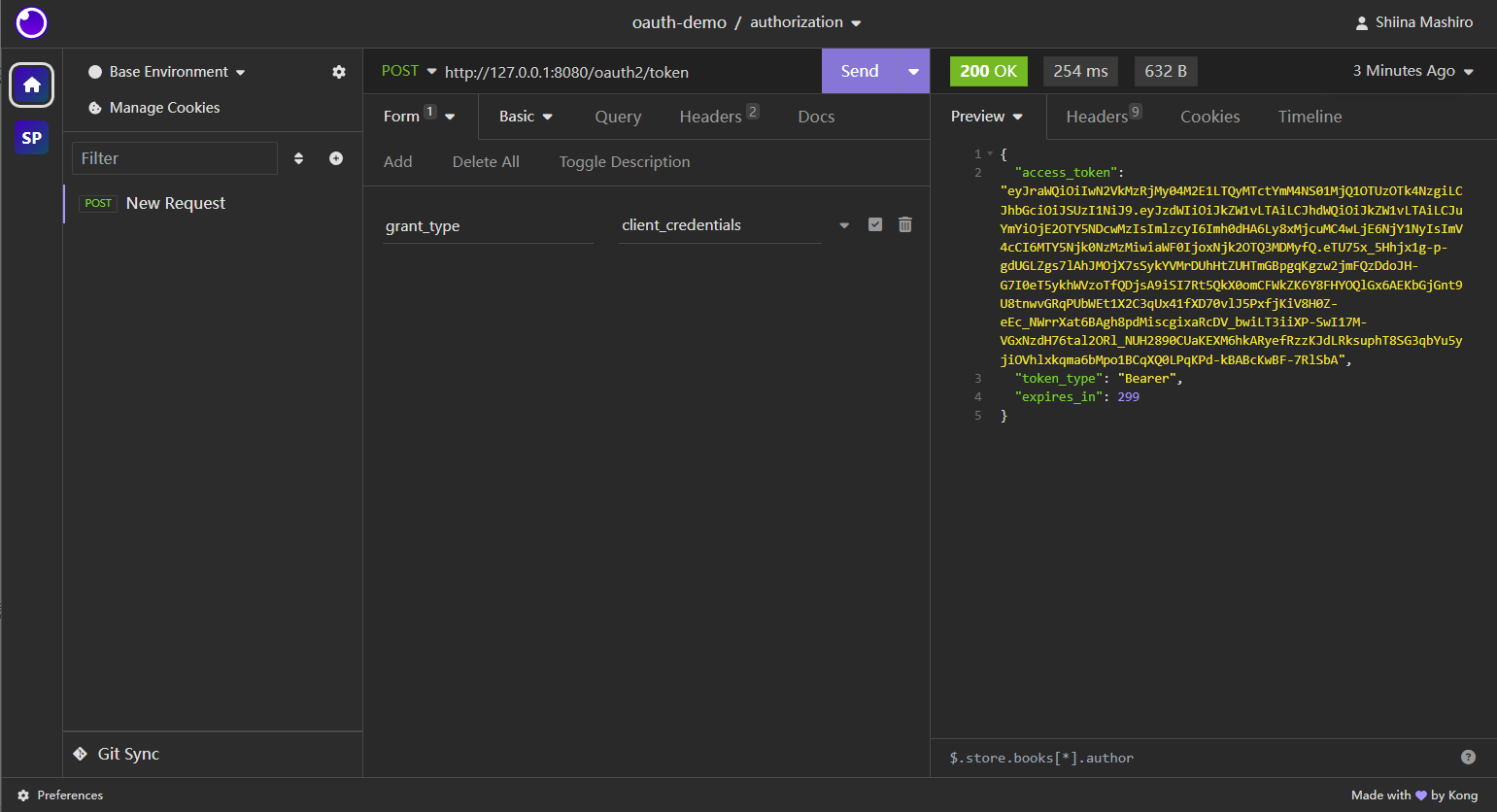
可以看到返回了
access_token和过期时间,客户端模式的具体介绍请看参考2
-
授权码模式
使用 authorization-server 同时作为 授权服务和资源服务
使用 client-1 作为客户端
authorization-server
配置文件:
server:
port: 8080
spring:
application:
name: authorization-server
security:
# 提供的user,仅供测试使用
user:
name: user
password: "{noop}password"
roles: USER
oauth2:
authorization-server:
client:
# 客户端标识
client-1:
registration:
client-id: client-1
client-secret: "{noop}password2"
# 授权方式:授权码,或使用refresh_token拿新的access_token
authorization-grant-types:
- "authorization_code"
- "refresh_token"
# 客户端验证方式
client-authentication-methods:
- client_secret_basic
# 在同意授权后重定向的uri
redirect-uris:
- http://127.0.0.1:8081/login/oauth2/code/client-1
post-logout-redirect-uris:
- http://127.0.0.1:8081/logout
# 提供的权限
scopes:
- "openid"
- "profile"
- "read"
- "write"
require-authorization-consent: true
token:
access-token-time-to-live: 3600s
refresh-token-time-to-live: 7200s
logging:
level:
org.springframework.security: trace
client-1
项目创建
-
依赖
implementation("org.springframework.boot:spring-boot-starter-oauth2-client") implementation("org.springframework.boot:spring-boot-starter-web") -
Config
@Configuration public class SecurityConfig { @Bean SecurityFilterChain securityFilterChain(HttpSecurity http) throws Exception { return http .authorizeHttpRequests(o -> o .requestMatchers("/").permitAll() .anyRequest().authenticated()) // 用于解决非https下 oauth Not injecting HSTS header since it did not match request to ... 问题 .headers(httpSecurityHeadersConfigurer -> httpSecurityHeadersConfigurer .httpStrictTransportSecurity(hstsConfig -> hstsConfig .maxAgeInSeconds(0) .includeSubDomains(true) ) ) .oauth2Login(Customizer.withDefaults()) .formLogin(Customizer.withDefaults()) .build(); } } -
Controller
提供两个接口,一个用于测试是否启动成功,一个用于跳转OpenID登录
@RestController @RequestMapping("/") public class AppController { private final AppService appService; public AppController(AppService appService) { this.appService = appService; } @GetMapping public String getPublicData() { return "Public data"; } @GetMapping("/private-data") public String getPrivateData() { return appService.getJwtToken(); } } -
Service
getJwtToken()需要权限profile@Service public class AppService { private final OAuth2AuthorizedClientService authorizedClientService; public AppService(OAuth2AuthorizedClientService authorizedClientService) { this.authorizedClientService = authorizedClientService; } @PreAuthorize("hasAuthority('SCOPE_profile')") public String getJwtToken() { var authentication = SecurityContextHolder.getContext().getAuthentication(); var accessToken = getAccessToken(authentication); var refreshToken = getRefreshToken(authentication); return String.format("Access Token = %s <br /><br /><br /> Refresh Token = %s", accessToken.getTokenValue(), refreshToken.getTokenValue()); } public OAuth2AccessToken getAccessToken(Authentication authentication) { var authorizedClient = this.getAuthorizedClient(authentication); return authorizedClient.getAccessToken(); } public OAuth2RefreshToken getRefreshToken(Authentication authentication) { var authorizedClient = this.getAuthorizedClient(authentication); return authorizedClient.getRefreshToken(); } private OAuth2AuthorizedClient getAuthorizedClient(Authentication authentication) { if (authentication instanceof OAuth2AuthenticationToken oauthToken) { String clientRegistrationId = oauthToken.getAuthorizedClientRegistrationId(); String principalName = oauthToken.getName(); return authorizedClientService.loadAuthorizedClient(clientRegistrationId, principalName); } return null; } } -
配置文件
server: port: 8081 spring: application: name: client-1 security: oauth2: client: registration: # 客户端标识,务必与授权服务注册的一致 client-1: # 已在下面的provider中配置 provider: spring # 标识自己 client-id: client-1 client-secret: password2 # 展示授权服务的名字 client-name: authorization-server # 授权方式 authorization-grant-type: authorization_code # redirect-uri 参数的内容 redirect-uri: "{baseUrl}/login/oauth2/code/{registrationId}" # 请求的权限,与授权服务注册的一致 scope: - openid - profile - read - write # 验证方式 client-authentication-method: client_secret_basic provider: # 使用google,github等不需要配置,已内置 spring: issuer-uri: http://localhost:8080 resource-server: jwt: issuer-uri: http://localhost:8080
流程图

测试
-
访问 http://127.0.0.1:8081
-
访问 http://127.0.0.1:8081/private-data
跳转到 http://127.0.0.1:8081/login
选择
Login with OAuth 2.0中的authorization-server相当于访问 http://127.0.0.1:8081/oauth2/authorization/client-1,然后重定向到:
http://localhost:8080/oauth2/authorize? response_type=code &client_id=client-1 &scope=openid%20profile%20read%20write &state=Za7PN3i8F-yLcxBUO0AkLFEm-Clg-s5RjJf46pDF6hE%3D // 回调的重定向url &redirect_uri=http://127.0.0.1:8081/login/oauth2/code/client-1 &nonce=1qN2mFKbEGaJb4jGFulwFDkR72dzEkgdZLrOSlRvfbk -
登录并授权
授权后重定向到:
http://127.0.0.1:8081/login/oauth2/code/client-1? // 授权码 code=CNL5dhSCyohdsRFVYkL4r9RNFhX-V-EWix8KIWd4jOYQW8gWiyihLLdAafnrswacxXaAZguuMphIbv_VLku50Q9LVehmkcpD0MbBgXlzABKhPU1X-FfkUZ8U0KqwMoxF &state=Za7PN3i8F-yLcxBUO0AkLFEm-Clg-s5RjJf46pDF6hE%3D
然后重定向到:http://127.0.0.1:8081/private-data?continue
- 拿取access_token和refresh_token在Service中完成
参考资料:

